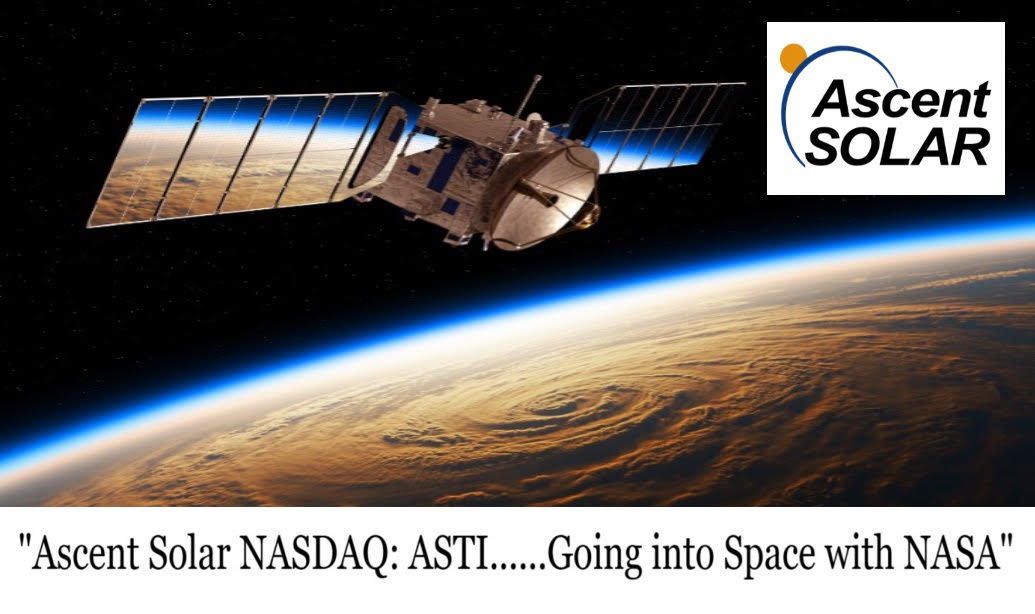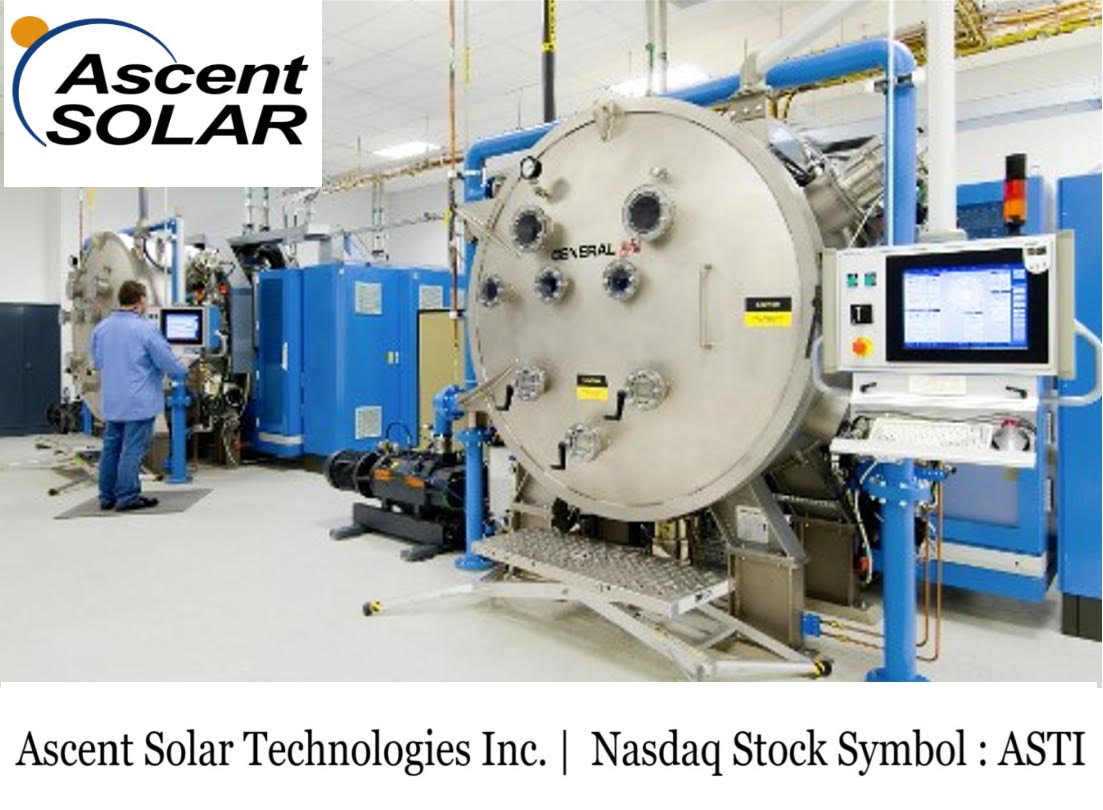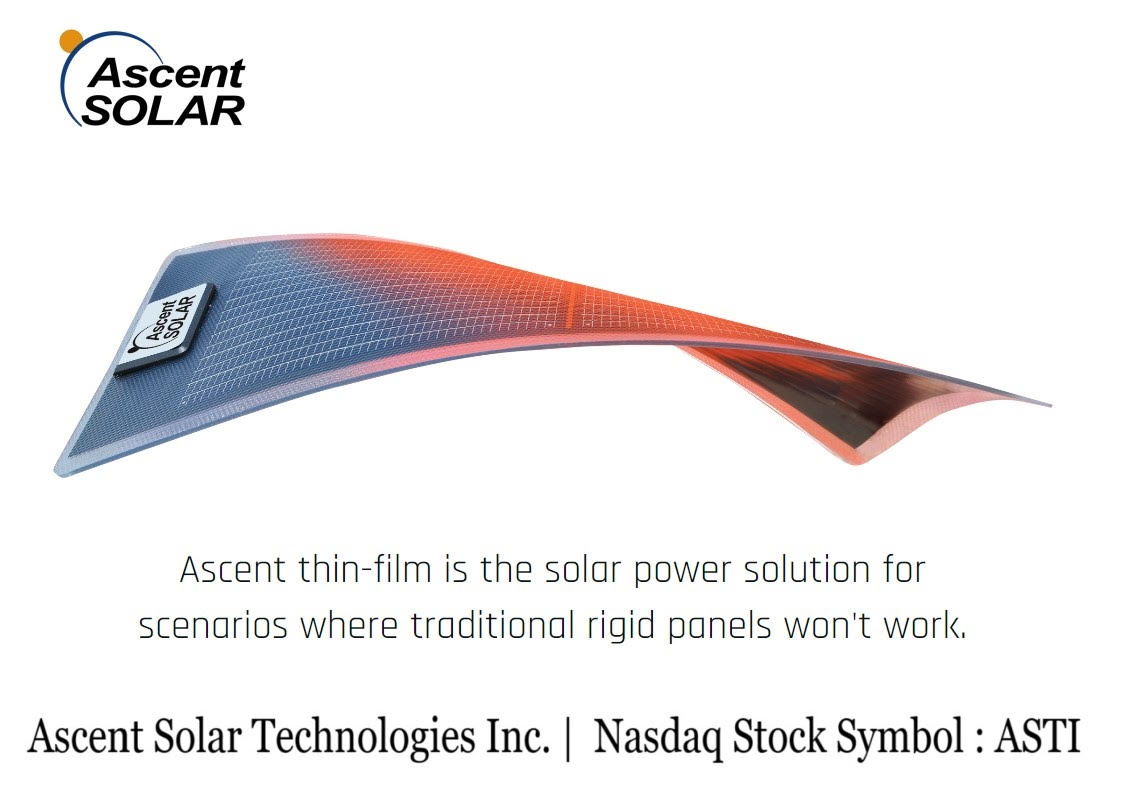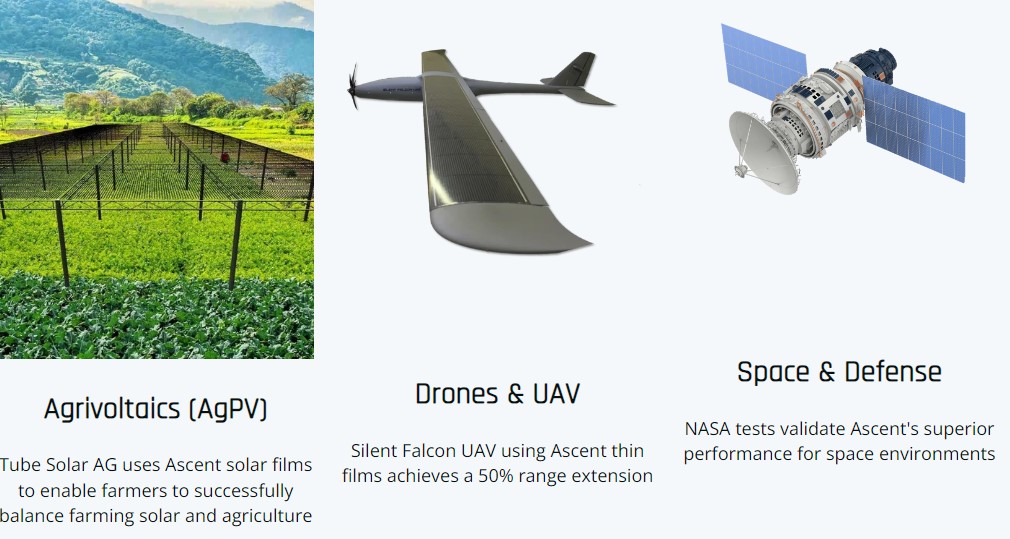Popular on TelAve
- EMBER™, the Only Standardized System Linking Workforce Identity to Growth, Appoints Global Brand Visionary Bret Sanford-Chung to Board of Directors - 203
- Iterators Named Preferred Accessibility Testing Vendor by MIT - 200
- Phinge®, Home of Netverse® and Netaverse™ With Verified and Safer AI Announces "Test the Waters" Campaign for Potential Regulation A+ Offering - 199
- OddsTrader Asks: What Are the Chances Your Team Makes the NFL Playoffs? - 198
- FreeTo.Chat Launches Silent Confessions, the Best Confession Site for Anonymous, Ad-Free Truth Sharing - 198
- Assent Joins AWS ISV Accelerate Program - 197
- Sober.Buzz Adds Second Podcast, "Spreading the Good BUZZ" Guest List Grows, Numbers Continue Growing Globally, All While Josh and Heidi Tied the Knot - 196
- Contracting Resources Group Appears Again on the Inc. List of Fastest-Growing Companies - 196
- Modernizing Pole Data Collection for Next-Gen Network Expansion - 196
- Heritage at South Brunswick Announces Two New Building Releases In Townhome Collection - 183
Similar on TelAve
- AureaVault Launches U.S.-Licensed Cryptocurrency Exchange with Enhanced Security Features
- IOTAP Named to 2025 Inc. 5000 List of America's Fastest-Growing Private Companies
- Lineus Medical and Venture Medical Sign New Zealand Distribution Agreement
- $5 - $20 Million in Sales for 2026; $25 - $40 Million for 2027 Projected with NASA Agreements; New MOU Signed to Improve Solar Tech in Space
- University of South Pacific and Battery Pollution Technologies Forge Strategic Partnership to tackle Battery End-of-Life Challenges in the Pacific
- Growth Acceleration via Strategic Reverse Split After $10 Million Acquisition for Concerts.com and TicketStub.com; AI Powered Sports/Entertainment Co
- Century Fasteners Corp. Exhibiting at the 2025 International Fastener Expo
- Canvas Cloud AI Launches to Transform Cloud Education From Memorization to Mastery
- The Squires Group Becomes a Workday Partner
- PermianMuseum.com adds Interstellar Visitor Video Gallery
Ascent Solar Technologies Enters Collaborative Agreement Notice with NASA to Advance Development of Thin-Film PV Power Beaming Capabilities: ASTI
TelAve News/10867194
Ascent Solar Technologies, Inc. (N A S D A Q: ASTI) $ASTI Thin Film CIGS Solar Tech has Key Applications in Aerospace, Agrivoltaic Installations, Industrial/Commercial Construction and Consumer Goods
THORNTON, Colo. - TelAve -- Provider of Innovative, High-Performance, Flexible Thin-Film Solar Panels for Environments Where Wass, Performance, Reliability and Resilience Matter.
Successful Applications in Space Missions, Aircraft, Agrivoltaic Installations, Industrial/Commercial Construction and Consumer Goods.
Research and Development Center and 5-MW Nameplate Production Facility Strategically Located in Thornton, Colorado.
Multiple Strategic Partners in the Space Market, Including a Major Defense Contractor, Multiple Deployable Technology Companies and a Satellite Company.
Ascent Solar Technologies Enters Collaborative Agreement Notice with NASA to Advance Development of Thin-Film PV Power Beaming Capabilities.
Record New Efficiency of 15.7% at Production Scale for CIGS Solar Technology.
Master Services Agreement to Provide NOVI Space with Rollable PV Array Blankets for Launch in 2026.
Ascent Solar Technologies, Inc. (N A S D A Q: ASTI) is backed by 40 years of R&D, 15 years of manufacturing experience, numerous awards, and a comprehensive IP and patent portfolio. ASTI is a leading provider of innovative, high-performance, flexible thin-film solar panels for use in environments where mass, performance, reliability and resilience matter. ASTI photovoltaic (PV) modules have been deployed on space missions, multiple airborne vehicles, agrivoltaic installations, in industrial/commercial construction as well as an extensive range of consumer goods, revolutionizing the use cases and environments for solar power. The ASTI research and development center and 5-MW nameplate production facility is strategically located in Thornton, Colorado.
Ascent Solar Technologies Enters Collaborative Agreement Notice with NASA to Advance Development of Thin-Film PV Power Beaming Capabilities
THORNTON, Colo., June 26, 2025 -- Ascent Solar Technologies (N A S D A Q: ASTI) ("Ascent" or the "Company"), the leading U.S. innovator in the design and manufacture of featherweight, flexible, and durable CIGS thin-film photovoltaic (PV) solutions, announced today that the company is commencing work on a Collaborative Agreement Notice (CAN) with NASA Marshall Space Flight Center (MSFC) and support from NASA Glenn Research Center (GRC) to efficiently advance capabilities for receiving beamed power using CIGS PV modules.
The CAN program targets rapid iterative development to mature commercial products for enabling mission architectures to include beamed power. The public-private partnership includes Ascent contributing design and prototyping services with NASA providing technical subject matter expertise and test services through combined MSFC & GRC efforts. This 12-month technology maturation will result in commercial products being made available for distributed space power infrastructure, drastically lowering the cost, complexity and risk of NASA missions.
Launched in 2023, NASA's Psyche Mission has demonstrated deep space laser communications across 19 million miles of space, validating the efficacy of tight-beaming technologies over vast distances. Bench-testing conducted by NASA MSFC in 2024 demonstrated receiving beamed power using Ascent's commercial-off-the-shelf (COTS) products as a preceding validation of the technology prior to the CAN award.
More on TelAve News
The CAN is evaluating the ability of Ascent's CIGS PV modules to generate power while illuminated by energy-dense beams of light, with goals to convert more usable power from the equivalent of tens of Earth's Sun. The ability to remotely receive 10x more power on-demand while using the same PV cells tasked with collecting sunlight can significantly reduce solar array mass and volume required to meet mission power needs. In practice, this suggests that beamed-power architectures can lead to reductions of both spacecraft mass and volume budgets. These size efficiencies will result in agency payloads proportionally increasing relative to the spacecraft as a whole, thus allowing the prioritization of more technology, science and exploration within limited mission budgets.
Planetary missions require advanced surface mobility logistics and depend on power generation subsystems that comprise a substantial proportion of the landed downmass. It is here where Ascent technology poses a potential solution for reducing spacecraft power system mass and volume needs, creating a significant impact on the overall mission.
The CAN's goals include increasing the array power output while lengthening the operational duty cycles to verify that improvements to this emerging technology can help enable NASA to effectively and efficiently achieve the agency's Commercial Lunar Payload Services (CLPS) missions, Artemis campaign to the Moon, and planetary science objectives. This includes enabling surviving the lunar night as well as powering remote access to areas of scientific interest such as cold traps and permanently shadowed regions on the Moon (PSRs) where water, the potential key to lunar in-situ resource utilization (ISRU), is believed to be located in high concentrations. Ultimately, this could lead to an order of magnitude reduction in the downmass required to access expensive space exploration and science mission destinations. The going rate for robotic landers on the Moon is between 6 & 7-figures per kilogram delivered to the lunar surface, equating to upwards of tens of millions of potential savings per lander mission.
"This collaboration with NASA further bolsters our longstanding belief that the unique capabilities of thin-film solar technology will play an integral role in overcoming the challenges of reliably converting solar energy and also receive beamed power in a breadth of harsh space environments," said Paul Warley, CEO of Ascent Solar Technologies. "Through our work together, we plan to bring an even more capable product line to market that will reduce mission costs and complexities while improving PV efficiency, making our technology a crucial piece of future space missions."
This cross-NASA-center teaming is demonstrative of rallying together with commercial partners to achieve the agency's broader Lunar program goals. Beamed power stands to allow NASA program dollars to accomplish more at a fraction of the cost. With 55 countries having signed the Artemis Accords since 2020, the establishment of critical Lunar infrastructure with less resources required facilitates achieving more together with international partners.
Achievement of Record New Efficiency of 15.7% at Production Scale for CIGS Solar Technology
On June 9th ASTI announced that its thin-film CIGS technology reached record efficiency at 15.7% (AM0) at production scale. This achievement aligns with the previously announced ASTI 2025 strategy which aimed to continue improving upon its thin-film PV's material quality, technological efficiency and production design optimization to increase the applicability of the technology in the space market.
More on TelAve News
Using the Titan™, a module approximately one square foot in size, ASTI can now produce a formidable 15.7 watts in power per unit. These modules are approximately 0.03mm in thickness and just over eight grams in weight, possess an impressive power density of 1960W/kg before encapsulation.
ASTI engineering and production teams have consistently achieved increases in device efficiency and overall performance since September 2023. In the last 18 months, ASTI has reached significant milestones in efficiency testing, with the latest achievement of 15.7% representing a significant increase from Q1 2024:
(Note: Power generation figures reflect STC conditions and AM0)
"These continued efficiency improvements for our CIGS arrays are the direct result of our U.S.-based manufacturing team's tireless focus on process improvement and advanced device engineering," said Paul Warley, CEO of ASTI. "The jump in device efficiency we've experienced over the past two years has dramatically enhanced our technology's readiness for the space market, positioning it as an ideal solar material choice for satellite power systems and other spacecraft."
Master Services Agreement to Provide NOVI Space with Rollable PV Array Blankets for Launch in 2026
On May 27th ASTI announced the signing of a Master Services Agreement with NOVI Space, Inc., a Virginia-based space company that develops and operates AI-powered satellites with their TRL-9 edge computing technology.
ASTI has been contracted to provide rollable PV array blankets to NOVI to deliver real-time Earth Observation insights directly from space. NOVI plans to utilize ASTI lightweight, rollable solar technology in their AI edge processing constellation, scheduled for launch in early 2026. As part of the supply agreement, NOVI will provide ASTI with solar array operational performance data from orbit. This allows ASTI to rapidly iterate and validate product enhancements for future missions and continue to build upon years of R&D and specialty engineering for products suitable to thrive in the rigors of space.
ASTI has the capabilities to deliver mission-optimized solar array solutions based on CIGS PV products already developed with spaceflight heritage. Its high-maturity CIGS PV products in manufactured in its 5MW production facility in Thornton, CO enables delivery of arrays in just 6-8 weeks, versus market competition that typically struggles to meet aggressive delivery schedules and strives for 9–12-month lead times.
Media Contact
Company Name: Ascent Solar Technologies, Inc (N A S D A Q: ASTI)
Contact Person: Paul Warley, CEO
Email: sales@ascentsolar.com
Phone: (720) 872-5000
Country: United States
Website: https://www.ascentsolar.com
DISCLAIMER: https://corporateads.com/disclaimer/
Disclosure listed on the CorporateAds website
Successful Applications in Space Missions, Aircraft, Agrivoltaic Installations, Industrial/Commercial Construction and Consumer Goods.
Research and Development Center and 5-MW Nameplate Production Facility Strategically Located in Thornton, Colorado.
Multiple Strategic Partners in the Space Market, Including a Major Defense Contractor, Multiple Deployable Technology Companies and a Satellite Company.
Ascent Solar Technologies Enters Collaborative Agreement Notice with NASA to Advance Development of Thin-Film PV Power Beaming Capabilities.
Record New Efficiency of 15.7% at Production Scale for CIGS Solar Technology.
Master Services Agreement to Provide NOVI Space with Rollable PV Array Blankets for Launch in 2026.
Ascent Solar Technologies, Inc. (N A S D A Q: ASTI) is backed by 40 years of R&D, 15 years of manufacturing experience, numerous awards, and a comprehensive IP and patent portfolio. ASTI is a leading provider of innovative, high-performance, flexible thin-film solar panels for use in environments where mass, performance, reliability and resilience matter. ASTI photovoltaic (PV) modules have been deployed on space missions, multiple airborne vehicles, agrivoltaic installations, in industrial/commercial construction as well as an extensive range of consumer goods, revolutionizing the use cases and environments for solar power. The ASTI research and development center and 5-MW nameplate production facility is strategically located in Thornton, Colorado.
Ascent Solar Technologies Enters Collaborative Agreement Notice with NASA to Advance Development of Thin-Film PV Power Beaming Capabilities
THORNTON, Colo., June 26, 2025 -- Ascent Solar Technologies (N A S D A Q: ASTI) ("Ascent" or the "Company"), the leading U.S. innovator in the design and manufacture of featherweight, flexible, and durable CIGS thin-film photovoltaic (PV) solutions, announced today that the company is commencing work on a Collaborative Agreement Notice (CAN) with NASA Marshall Space Flight Center (MSFC) and support from NASA Glenn Research Center (GRC) to efficiently advance capabilities for receiving beamed power using CIGS PV modules.
The CAN program targets rapid iterative development to mature commercial products for enabling mission architectures to include beamed power. The public-private partnership includes Ascent contributing design and prototyping services with NASA providing technical subject matter expertise and test services through combined MSFC & GRC efforts. This 12-month technology maturation will result in commercial products being made available for distributed space power infrastructure, drastically lowering the cost, complexity and risk of NASA missions.
Launched in 2023, NASA's Psyche Mission has demonstrated deep space laser communications across 19 million miles of space, validating the efficacy of tight-beaming technologies over vast distances. Bench-testing conducted by NASA MSFC in 2024 demonstrated receiving beamed power using Ascent's commercial-off-the-shelf (COTS) products as a preceding validation of the technology prior to the CAN award.
More on TelAve News
- Phinge Previews Its Magnetically Connectable 360° Folding Smartphones-to-Tablets As The Exclusive Gateway to Netverse App-less Rewards-based Platform
- BusinessRate Selects New Jersey Therapy & Life Coaching as Best Couselors
- IRL Investigations Combines Decades of Experience with Modern Digital Expertise
- New Leadership Model – Never Fire Anyone – Released Today
- AureaVault Launches U.S.-Licensed Cryptocurrency Exchange with Enhanced Security Features
The CAN is evaluating the ability of Ascent's CIGS PV modules to generate power while illuminated by energy-dense beams of light, with goals to convert more usable power from the equivalent of tens of Earth's Sun. The ability to remotely receive 10x more power on-demand while using the same PV cells tasked with collecting sunlight can significantly reduce solar array mass and volume required to meet mission power needs. In practice, this suggests that beamed-power architectures can lead to reductions of both spacecraft mass and volume budgets. These size efficiencies will result in agency payloads proportionally increasing relative to the spacecraft as a whole, thus allowing the prioritization of more technology, science and exploration within limited mission budgets.
Planetary missions require advanced surface mobility logistics and depend on power generation subsystems that comprise a substantial proportion of the landed downmass. It is here where Ascent technology poses a potential solution for reducing spacecraft power system mass and volume needs, creating a significant impact on the overall mission.
The CAN's goals include increasing the array power output while lengthening the operational duty cycles to verify that improvements to this emerging technology can help enable NASA to effectively and efficiently achieve the agency's Commercial Lunar Payload Services (CLPS) missions, Artemis campaign to the Moon, and planetary science objectives. This includes enabling surviving the lunar night as well as powering remote access to areas of scientific interest such as cold traps and permanently shadowed regions on the Moon (PSRs) where water, the potential key to lunar in-situ resource utilization (ISRU), is believed to be located in high concentrations. Ultimately, this could lead to an order of magnitude reduction in the downmass required to access expensive space exploration and science mission destinations. The going rate for robotic landers on the Moon is between 6 & 7-figures per kilogram delivered to the lunar surface, equating to upwards of tens of millions of potential savings per lander mission.
"This collaboration with NASA further bolsters our longstanding belief that the unique capabilities of thin-film solar technology will play an integral role in overcoming the challenges of reliably converting solar energy and also receive beamed power in a breadth of harsh space environments," said Paul Warley, CEO of Ascent Solar Technologies. "Through our work together, we plan to bring an even more capable product line to market that will reduce mission costs and complexities while improving PV efficiency, making our technology a crucial piece of future space missions."
This cross-NASA-center teaming is demonstrative of rallying together with commercial partners to achieve the agency's broader Lunar program goals. Beamed power stands to allow NASA program dollars to accomplish more at a fraction of the cost. With 55 countries having signed the Artemis Accords since 2020, the establishment of critical Lunar infrastructure with less resources required facilitates achieving more together with international partners.
Achievement of Record New Efficiency of 15.7% at Production Scale for CIGS Solar Technology
On June 9th ASTI announced that its thin-film CIGS technology reached record efficiency at 15.7% (AM0) at production scale. This achievement aligns with the previously announced ASTI 2025 strategy which aimed to continue improving upon its thin-film PV's material quality, technological efficiency and production design optimization to increase the applicability of the technology in the space market.
More on TelAve News
- IOTAP Named to 2025 Inc. 5000 List of America's Fastest-Growing Private Companies
- Lineus Medical and Venture Medical Sign New Zealand Distribution Agreement
- Black Plumbing Expands to Cleburne, TX, Bringing Over 30 Years of Trusted Plumbing Service
- PhingePlay Magnetically Connectable Foldable 1 2 & 3 Screen Wireless 1 or 2 Player Gaming Systems Can Be Created By Using Any Patented Phinge Phone
- $5 - $20 Million in Sales for 2026; $25 - $40 Million for 2027 Projected with NASA Agreements; New MOU Signed to Improve Solar Tech in Space
Using the Titan™, a module approximately one square foot in size, ASTI can now produce a formidable 15.7 watts in power per unit. These modules are approximately 0.03mm in thickness and just over eight grams in weight, possess an impressive power density of 1960W/kg before encapsulation.
ASTI engineering and production teams have consistently achieved increases in device efficiency and overall performance since September 2023. In the last 18 months, ASTI has reached significant milestones in efficiency testing, with the latest achievement of 15.7% representing a significant increase from Q1 2024:
- Q3 2023: 11.6 watts
- Q4 2023: 13.3 watts
- Q1 2024: 14.0 watts
- Q2 2025: 15.7 watts
(Note: Power generation figures reflect STC conditions and AM0)
"These continued efficiency improvements for our CIGS arrays are the direct result of our U.S.-based manufacturing team's tireless focus on process improvement and advanced device engineering," said Paul Warley, CEO of ASTI. "The jump in device efficiency we've experienced over the past two years has dramatically enhanced our technology's readiness for the space market, positioning it as an ideal solar material choice for satellite power systems and other spacecraft."
Master Services Agreement to Provide NOVI Space with Rollable PV Array Blankets for Launch in 2026
On May 27th ASTI announced the signing of a Master Services Agreement with NOVI Space, Inc., a Virginia-based space company that develops and operates AI-powered satellites with their TRL-9 edge computing technology.
ASTI has been contracted to provide rollable PV array blankets to NOVI to deliver real-time Earth Observation insights directly from space. NOVI plans to utilize ASTI lightweight, rollable solar technology in their AI edge processing constellation, scheduled for launch in early 2026. As part of the supply agreement, NOVI will provide ASTI with solar array operational performance data from orbit. This allows ASTI to rapidly iterate and validate product enhancements for future missions and continue to build upon years of R&D and specialty engineering for products suitable to thrive in the rigors of space.
ASTI has the capabilities to deliver mission-optimized solar array solutions based on CIGS PV products already developed with spaceflight heritage. Its high-maturity CIGS PV products in manufactured in its 5MW production facility in Thornton, CO enables delivery of arrays in just 6-8 weeks, versus market competition that typically struggles to meet aggressive delivery schedules and strives for 9–12-month lead times.
Media Contact
Company Name: Ascent Solar Technologies, Inc (N A S D A Q: ASTI)
Contact Person: Paul Warley, CEO
Email: sales@ascentsolar.com
Phone: (720) 872-5000
Country: United States
Website: https://www.ascentsolar.com
DISCLAIMER: https://corporateads.com/disclaimer/
Disclosure listed on the CorporateAds website
Source: CorporateAds
0 Comments
Latest on TelAve News
- SOBREO Elixirs Debut in New York City, Defining a New Era in Inclusive Hospitality
- Allen Field to Showcase Sustainable Paper Handle Applicator at PACK EXPO Las Vegas 2025
- Premier Broadband Wins Fiber-Only BEAD Projects in Four Arkansas Counties
- Laughter, Magic & Mayhem Take Over Las Vegas At Two Hot Locations! Delirious Comedy Club & House of Magic Bring Nonstop Entertainment
- 500% Increase in Revenue for Q2 with Acquisition Plans Including UK Telecom 3D Design/Modeling Company for Global AI Drone & Quantum Computing Leader
- K2 Integrity and Rafidain Bank Launch Strategic Partnership to Strengthen Financial Integrity
- Anern's 2025 Global Energy Journey: Expanding Clean Energy Across Four Continents
- Joint Venture for Expansion Into Asset-Backed Real Estate; $100 Million Initiative via Offering of Shares at Over $4 for Digital Assets: $OFAL
- Mrs. Field's Closet Expands to Minot North High School
- $1 Billion Revenue Target, $15M EBITDA Run Rate Plan, and a Breakout Moment for This Global Tech Powerhouse: IQSTEL, Inc. (N A S D A Q: IQST):
- Wohler announces release of a new innovative MPEG SRT, H.264 and H.265 HEVC Audio & Video monitor
- Historic Agreement Reached Between The Providence Foundation And City Of San Francisco Paves Way For Stronger Community Resources For The Homeless
- Create Personalized Happy Birthday Songs Instantly with Sing Me Happy Birthday's New Free Birthday Song Maker
- Mothers Against Drunk Driving Recognizes Debra Gudema with Leadership Certificate
- Integris Composites unveils campus ballistic shield for school shooting response
- Discover Heritage at Manalapan - A New Single Family Community
- EIG Global Trust Unveils Groundbreaking Gold Backed Digital Currency Stablecoin Ecosystem Poised to Accelerate the Global Digital Asset Transformation
- SQUARESIGNS Featured in Inc.5000 List Again
- Lowcountry Male and AquaVitae Announce New Clinic Opening in Savannah, Georgia
- Only 7 Days Left for Early Bird Registration to the OpenSSL Conference 2025





